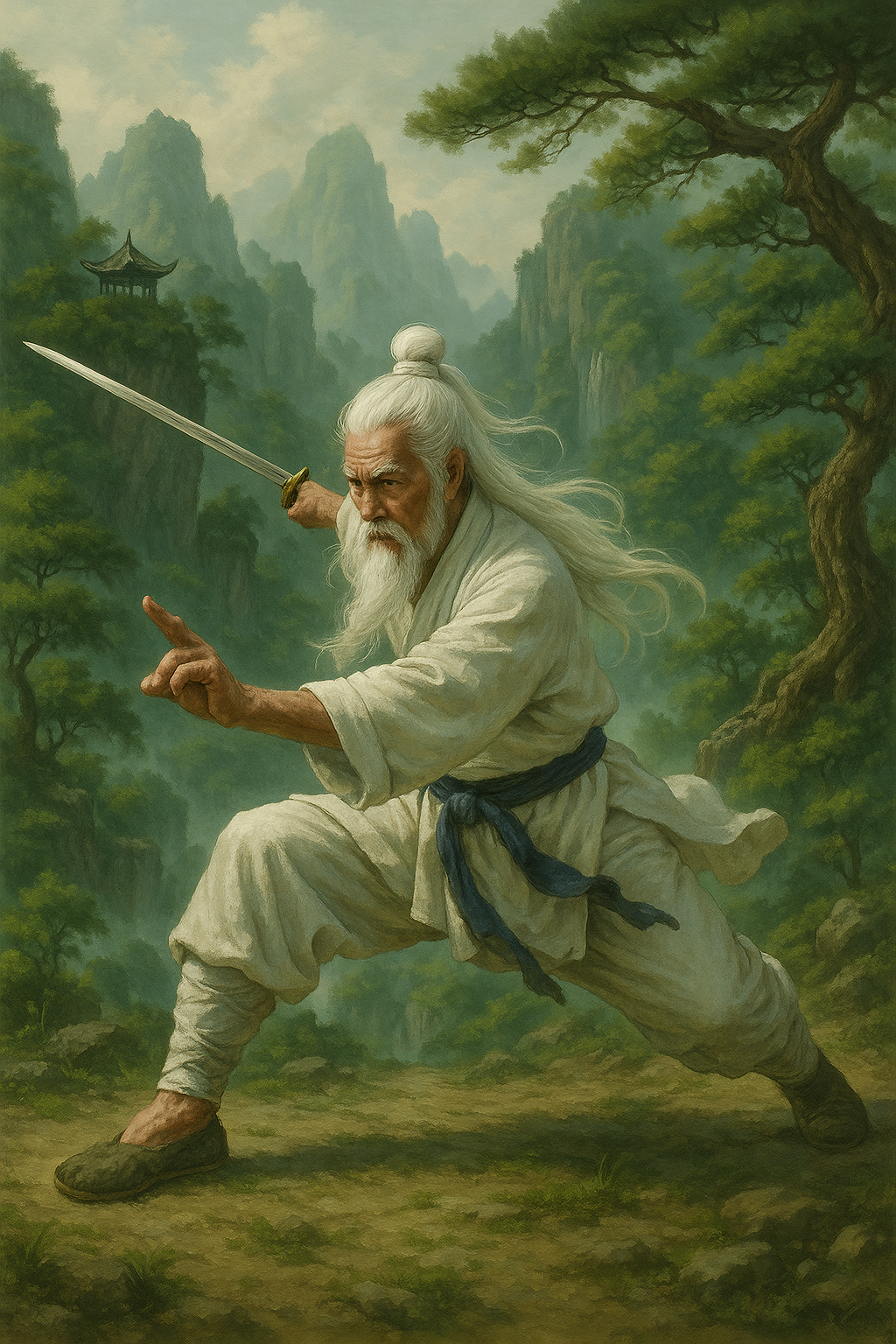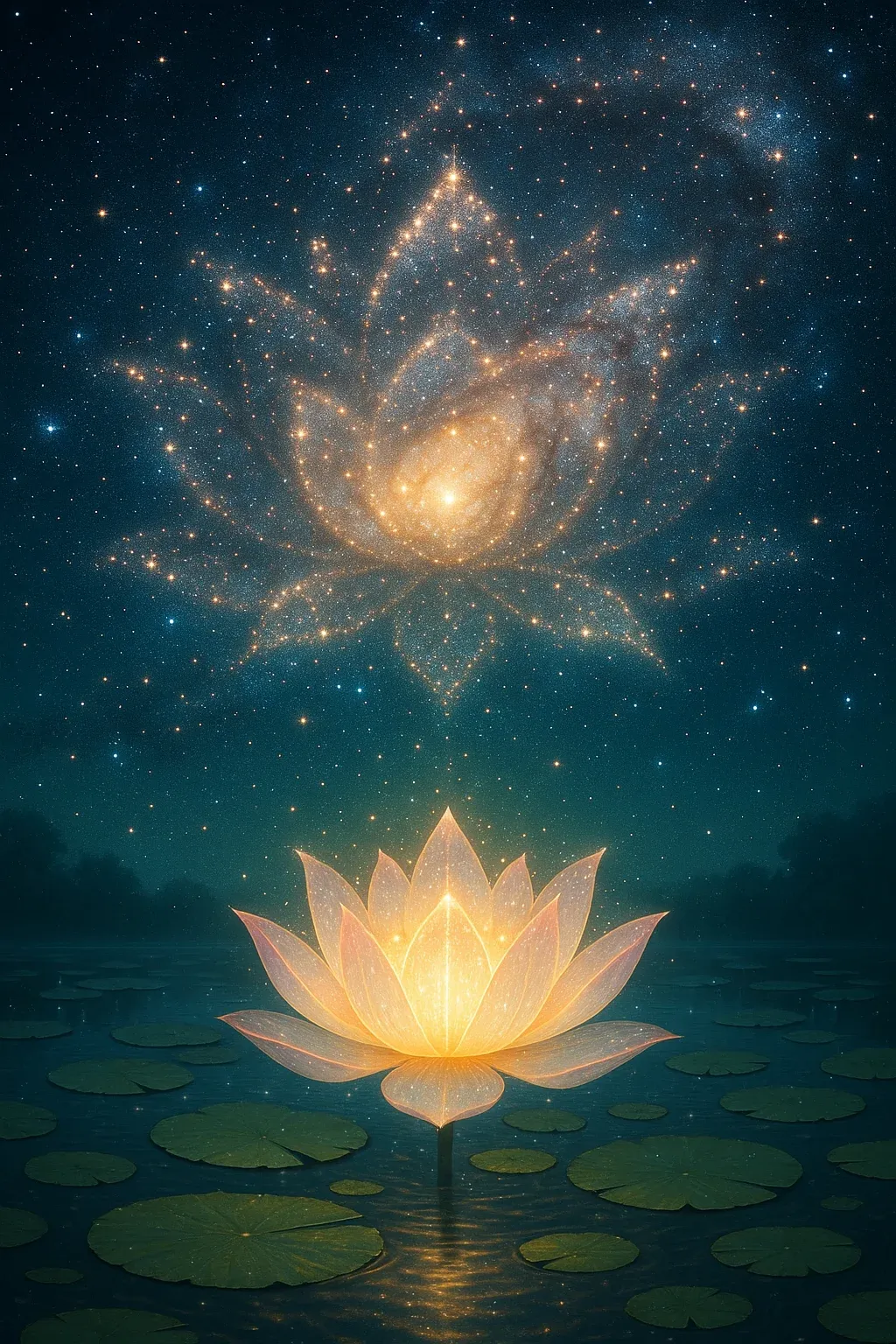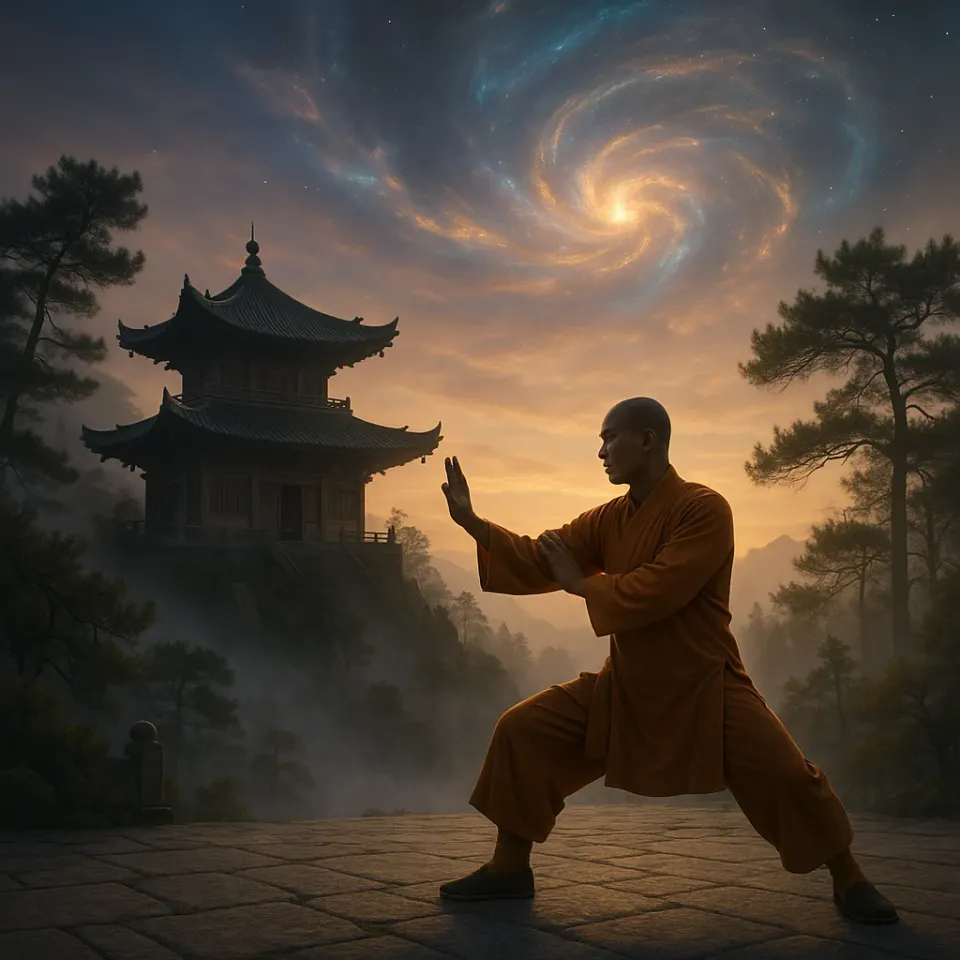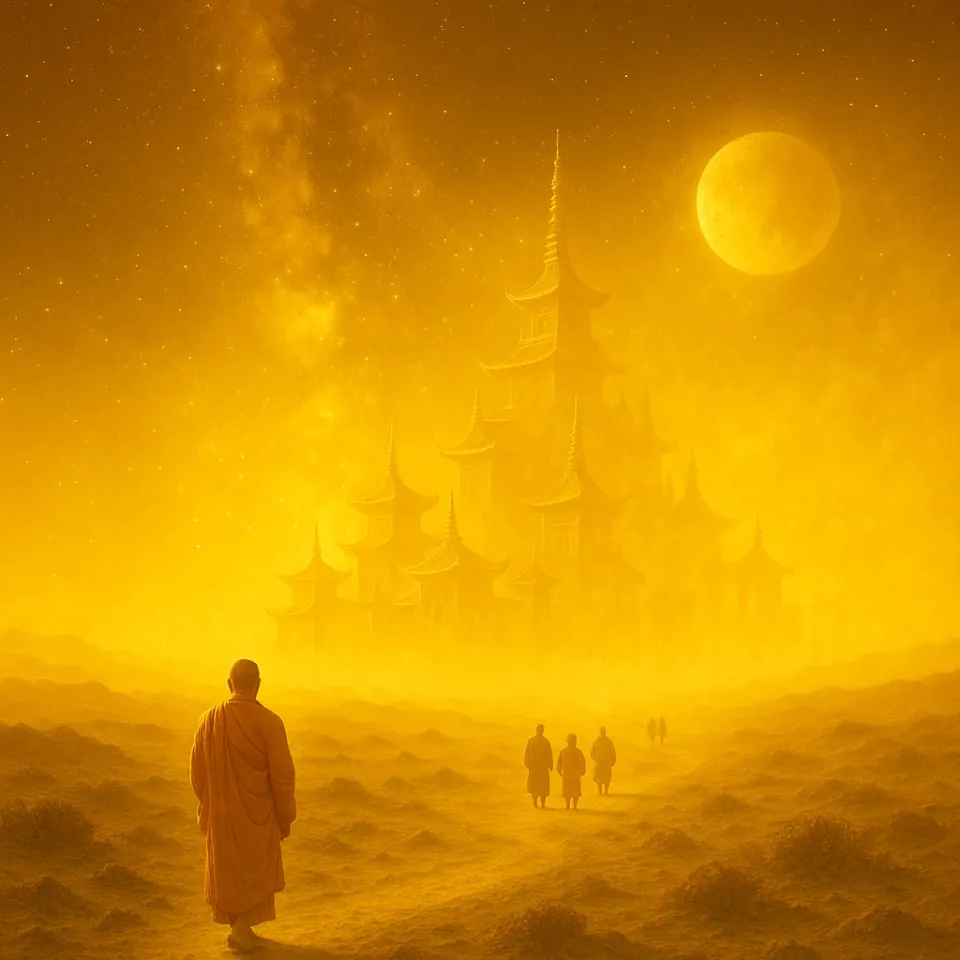Longshu's Journey to the Sky Library - After Death by Hell Bodhisattva
This post shares class notes on Amitabha Buddha, exploring Longshu’s mystical visit to a cosmic library, teachings on consciousness after death, and the Pure Land path. Through karma, vows, and sincere practice like nianfo, the soul connects to Amitabha’s realm—offering peace beyond rebirth.
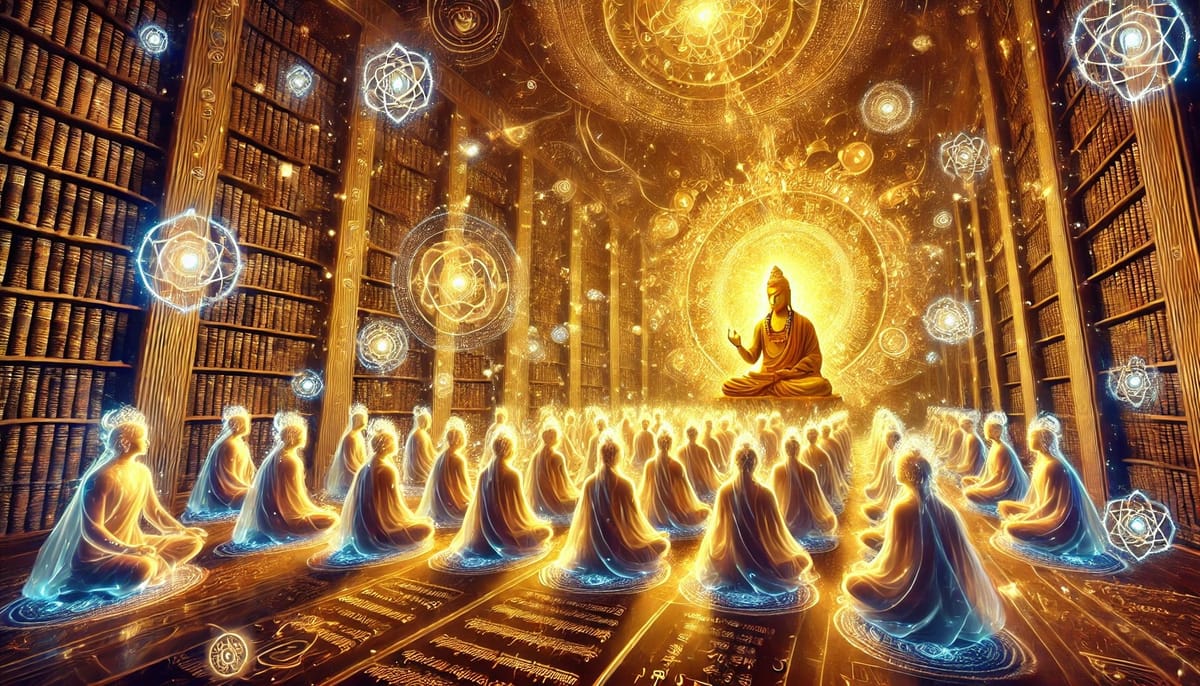
Amitabha Buddha Class Notes
1. Longshu’s Journey to the Sky Library

- A monk named Longshu (translated as Dragon Trees) was a Bodhisattva.
- In deep meditation, Longshu travelled to a sky universe, where he visited a sky library the size of our universe. It contained wisdom on every Buddha and Bodhisattva's path to awakening.
- Siddhartha Buddha accompanied him and allowed Longshu to choose a book to bring back to help humanity.
- Despite the vastness, Siddhartha advised him to take just the first two books—suitable for humans.
- Longshu returned, translated the texts, and began teaching them.
2. The Class of Energy Gods and the Nature of Consciousness After Death
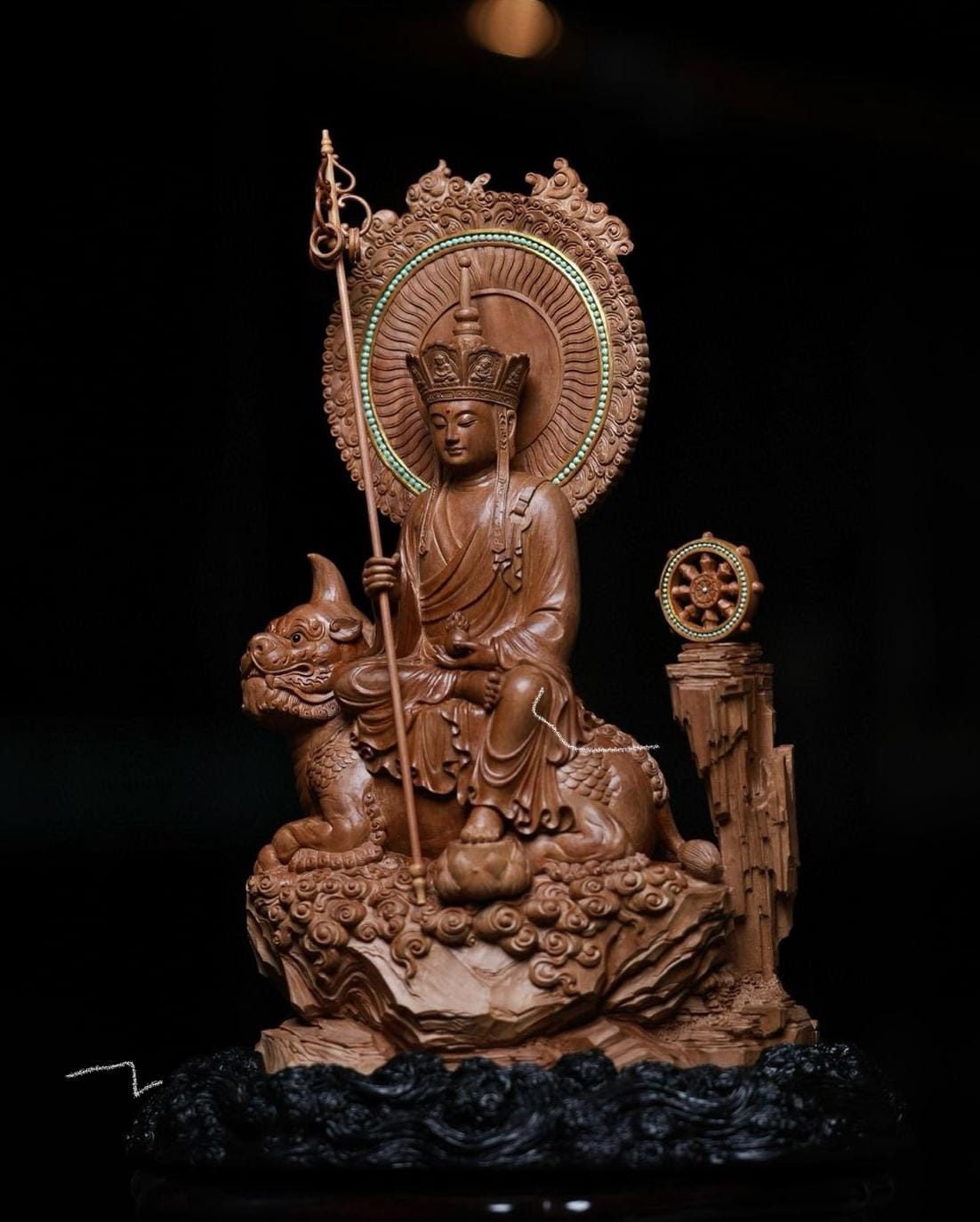
- While in the sky library, Longshu saw a class of energy gods learning from a Buddha.
- One energy god asked about:
- What happens after death?
- How does consciousness decide where to go?
- How does karma work?
- Hell Bodhisattva taught:
- After death, consciousness remains in a 'ghost' state for about three weeks.
- It does not realize it has died due to attachment to the body.
- This state lacks brain consciousness and resembles dizziness or illness.
- During this phase, the consciousness faces nine tests involving greed, kindness, and ego.
- These tests help foster regret over bad karma and guide the being toward a better next life.
- A student asked if another system existed.
- The Buddha introduced the "will system":
- Bowing to Buddhas or Bodhisattvas creates a spiritual seed.
- This connects the being to that enlightened one after death.
- Amitabha Buddha’s system offers a direct path to rebirth in the Pure Land.
- Sincere practice connects the consciousness to signs like Dharma wheels, lotuses, golden lights, or direct visions of Buddhas and Bodhisattvas at death.
3. Siddhartha Buddha’s Story of the Drunken Student
- Siddhartha shared about a habitual drunkard who attended teachings but acted disrespectfully.
- During a session on Amitabha Buddha, the drunkard listened silently.
- The next day, he fell in a temple and, in that moment, sincerely wished to be reborn in the Pure Land.
- This heartfelt wish planted a spiritual seed, guiding him toward Amitabha’s Pure Land.
Other Sources and Notes on Amitabha Buddha and Related Teachings
1. Nāgārjuna (Longshu) and His Contributions
- Historical Context: Nāgārjuna (Longshu Bodhisattva) was a major Indian Mahayana philosopher and founder of the Madhyamaka school.
Source: Buddha Nature - Pure Land Association: He emphasized mindfulness of the Buddha and Pure Land practices.
Source: Buddhist Door
2. Amitabha Buddha’s Pure Land and Rebirth Practices
- Pure Land Buddhism: Amitabha’s vow created a Pure Land (Sukhavati) where beings can attain enlightenment more easily.
Source: Wikipedia - Rebirth Mantras: Reciting the Amitabha Rebirth Dhāraṇī helps reduce karma and promotes Pure Land rebirth.
Source: Buddha Weekly - Nianfo Practice: Constantly reciting Amitabha’s name strengthens the bond for rebirth in the Pure Land.
Source: Wikipedia
3. The Amitāyus Contemplation Sūtra
- Outlines rebirth methods including visualizations and mindfulness of Amitabha. Describes nine levels of birth in the Pure Land.
Source: Wikipedia
4. The Role of Faith and Vows
- A sincere vow to be reborn in Amitabha’s Pure Land aligns the mind with its qualities and supports rebirth.
Source: Pure Land Buddhism
By integrating these insights and sources, your understanding of Amitabha Buddha’s teachings and rebirth practices can deepen and become more holistic.
